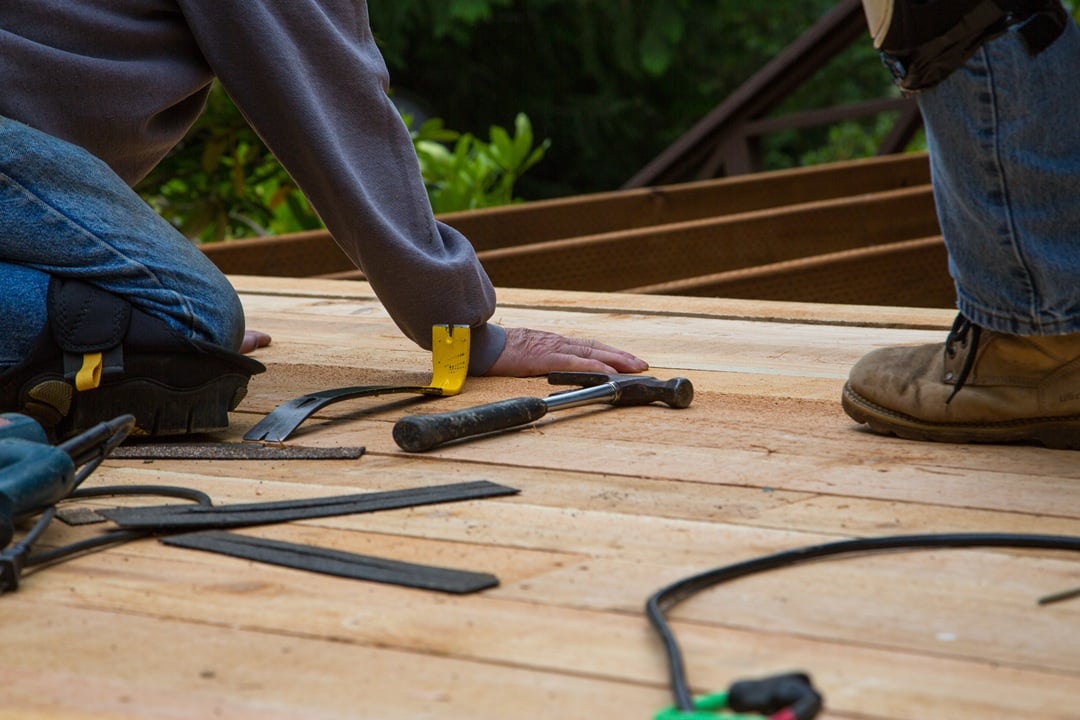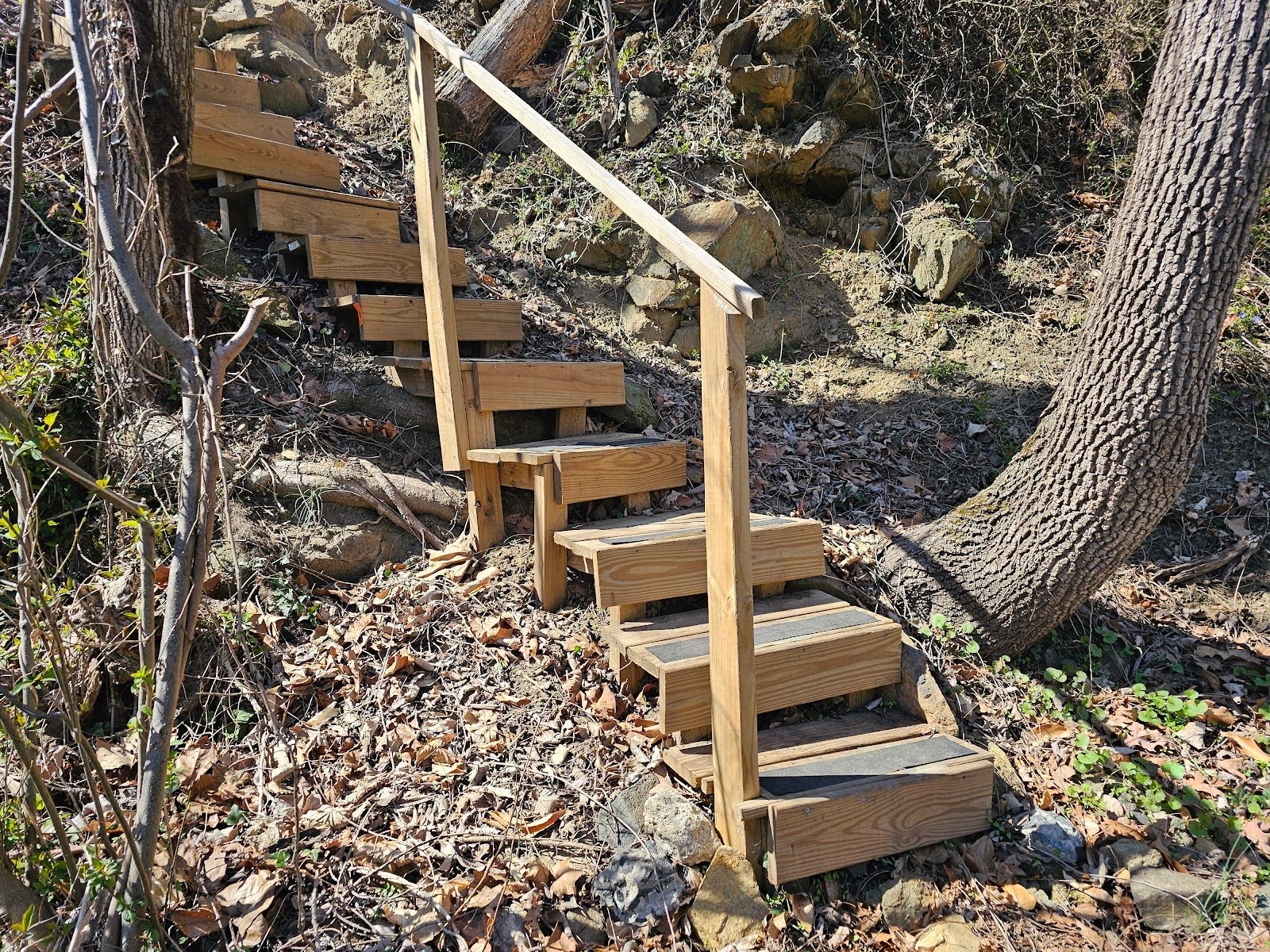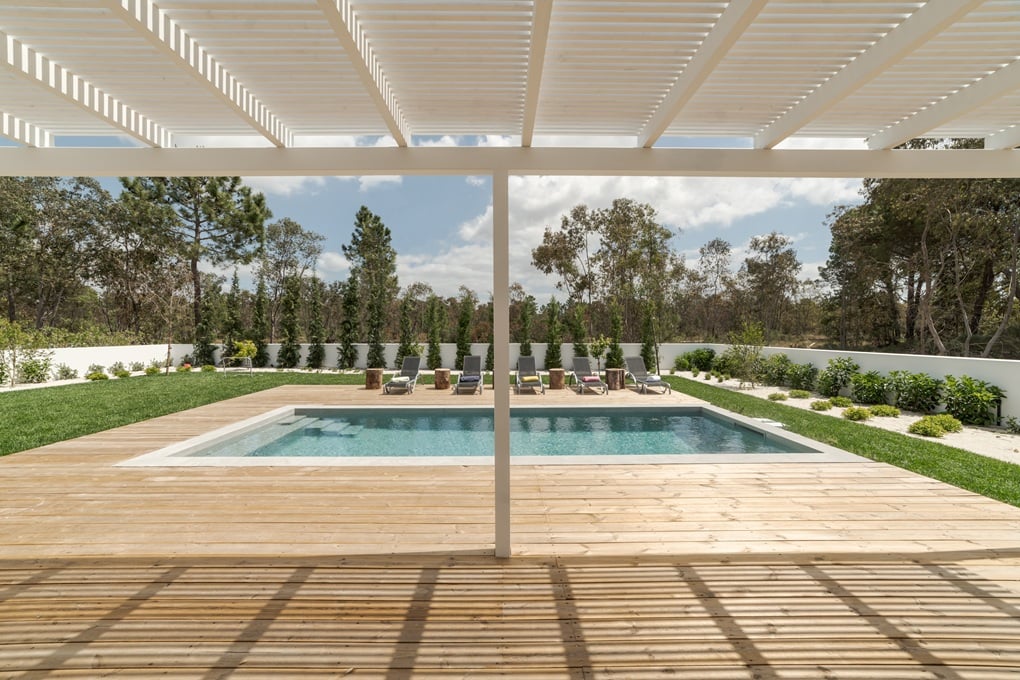Midlanding ideas for deck stairway framing
This past week we started looking at a contemporary deck that was well built with a white vinyl sleeves covering or surrounding the wood posts. The vinyl sleeve has a visual characteristic, it provides a white finish or covering, but it’s questionable whether or not that particular aesthetic is better or worse. To some people, it just looks like it’s taking an otherwise beautiful exposed wood grain deck and making it look like white plastic.
White trims and finishes were very common in the mid 20th century, but today they’re not preferred or considered as appealing as they used to be. Deck stains can help protect the exposed wood grain from some of the negative effects of exposure to ultraviolet rays, and this sleeve also does the same thing to protect the wood, but that type of ultraviolet ray exposure damage happens slowly over many years, in most cases. Having the sleeve allows the deck to go without the same regiment of routine re-staining and sealing that would be recommended with a completely exposed wooden deck.
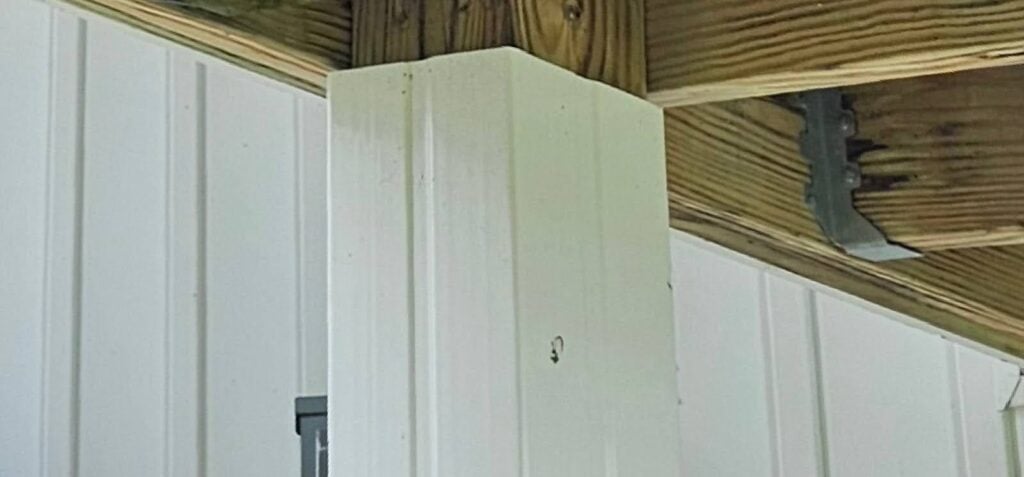
The smaller 4×4 posts are used, not for structural support of the deck, but for posts at the guardrail above at the mid landing. The guardrails need to be attached to a vertical element and that vertical element has to have the type of support that can withstand the tensile type forces of people leaning or pushing their weight against the guardrail. Here, the 4×4 posts are installed down through the deck boards and attached to the rim joist below, similar to the post, but the post that support the deck and at the top of the joists and run downward, whereas the guard rail supports start at the bottom of the joists and run upwards.
These vinyl sleeves can be made from a PVC type vinyl material or from a composite material, but a lesser known detail of the deck material used in decks is that even composite materials generally included significant amounts of PVC.
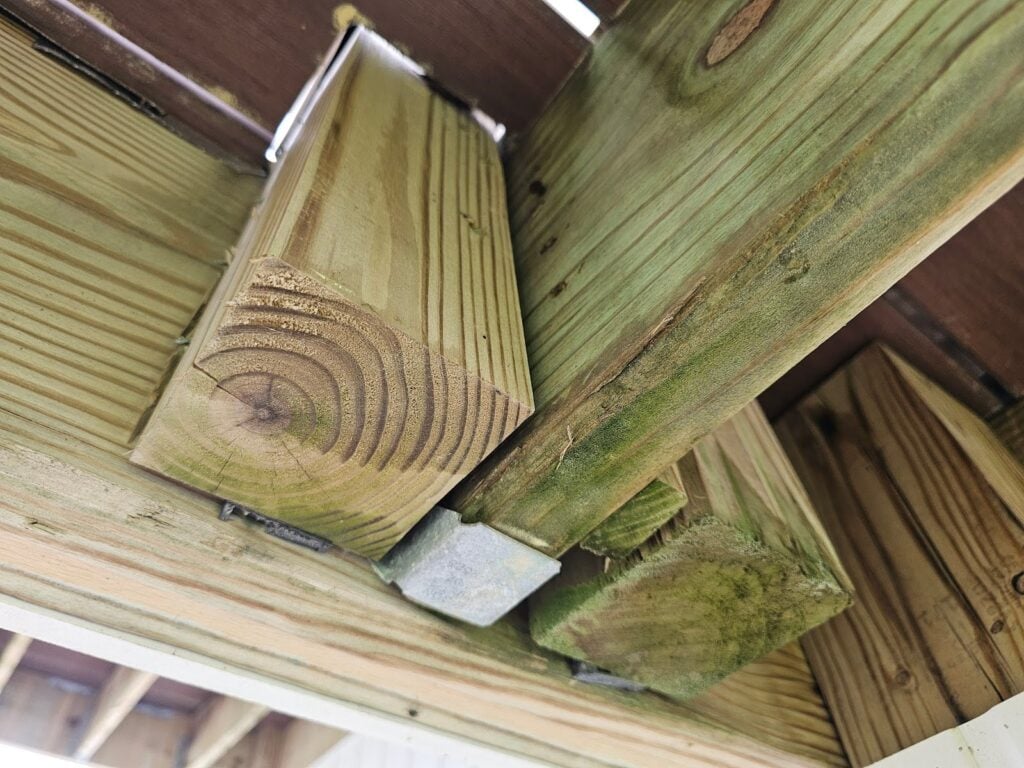
The stairway is over 40 in wide and in this case they’ve used a total of four stringers to support the treads and risers of the stairway. Here in Washington DC, most code requirements, depending on the type zoning classification required for the specific property, generally require that Ingress and egress access stairways are at least 36 in wide. This particular stair exceeds that minimum requirement and that additional space creates more ease and comfort for traversing the stairway.
This detail is particularly helpful or beneficial when considering the ergonomics of climbing or descending up or down the steps with your arms full of common things like a suitcase or many bags full of groceries. It’s much more ergonomically comfortable to have a bit of additional space. In addition to the simple requirement of a 36-in minimum width of a stairway, here in Washington DC, for some properties, there are also other exceptions and exclusions that apply to the rules.
For example, if there’s a handrail on one side, the overall clear width is allowed to be reduced slightly, in some cases down to just 31-½ inches. If there’s a handrail on both sides, the clear opening space can sometimes be reduced to as low as just 27 in. Interestingly, with historic homes, built over 100 years ago, most stairways provided less space than the current modern requirements.
The stringers support the stair treads and also provide a place to mount the stair risers. Stair risers are actually not a requirement of the building code, at most configuration for exterior decks. In other words, in some cases, it’s acceptable to have open space between the stair treads. It doesn’t really create a significant risk to have these areas open, but some people feel uneasy about climbing up a set of stairways with open riser spaces.
In the picture below, you can see the joists used for the structural support of the stair treads and risers. With a wider overall spacing or layout of the stairway, additional joists may be needed to support the wider treads. Especially with composite decking, we often recommend joists be installed at least every 16 inches on center.
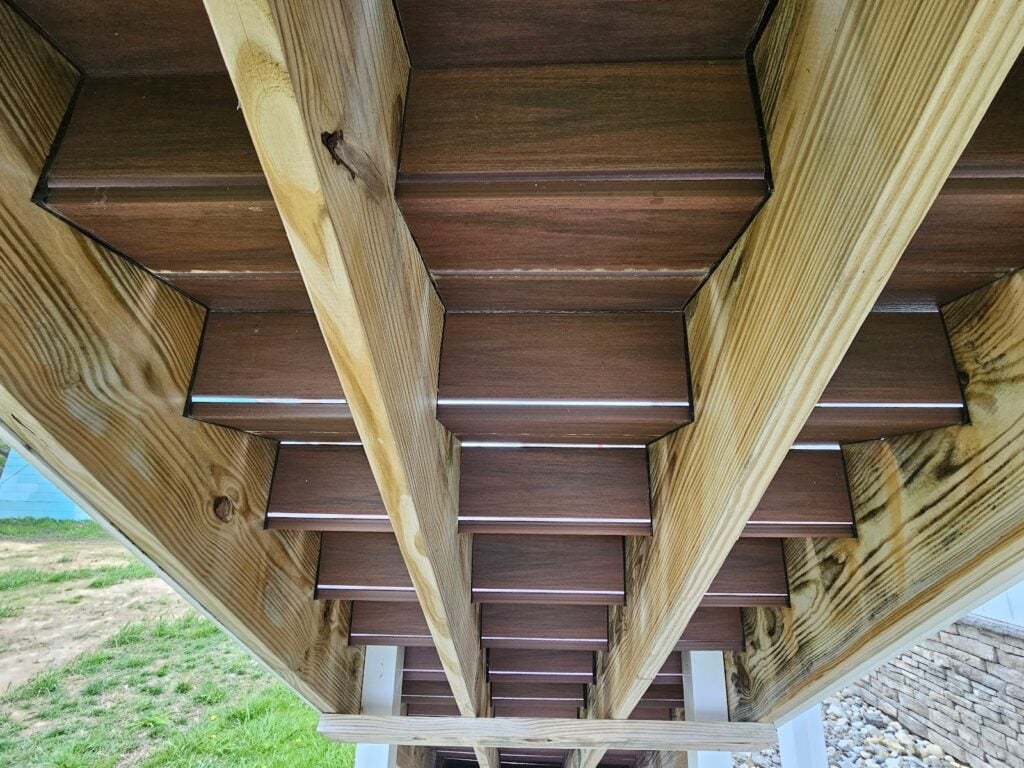
In the picture below, you can see a closer view of the cutout in the joist, essentially a notch repeated throughout the length of the joist to create a space to install the treads and risers. The layout of the notch cut into the joist can be assisted through a handful of different tools but without a little bit of experience, sometimes the calculation can be complicated.
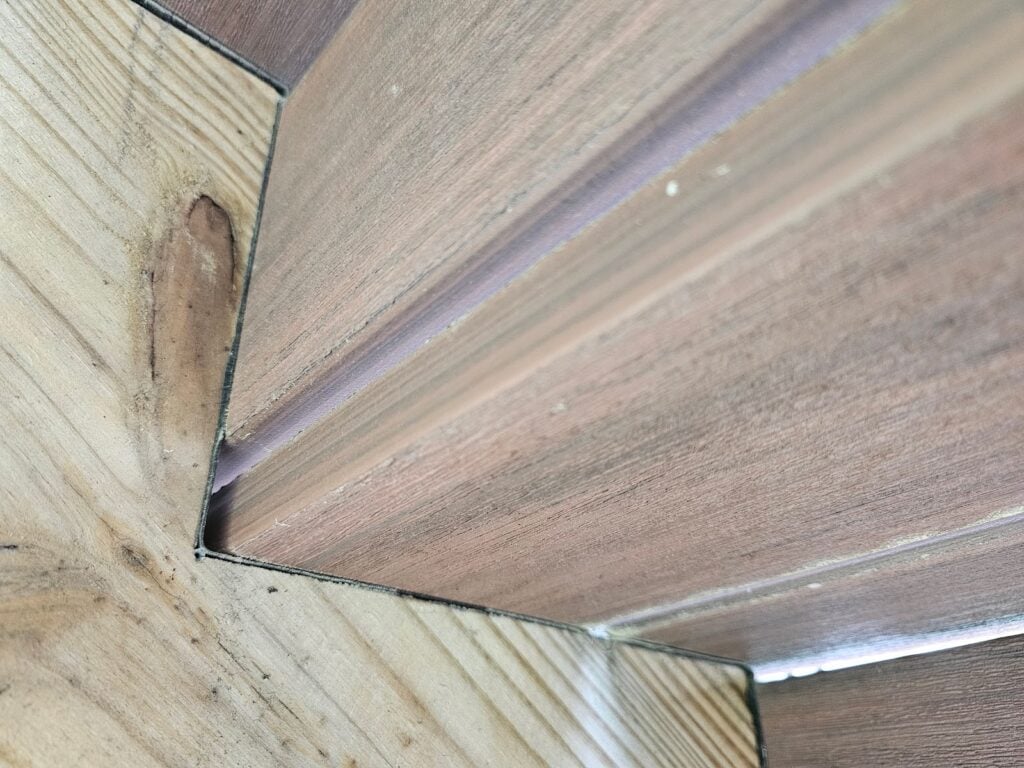
Use a contractor who understands and cares about doing things right. Always, feel free to reach out to us here at Dupont Decks and Patios. We are happy to help with almost all steps of the deck building and design process. A backyard and outdoor space should make a significant, positive impact on both quality of life and home value. We can help with more than just decks, we also build patios, pergolas, ramadas, awnings, gazebos, arbors, and privacy fences.
Let us know about your ideas and talk to us if you have questions about possibilities. We are happy to participate in improving your outdoor space and quality of life! You can call us at (202) 774-9128. You can find us online at https://dupontdeckspatiosdc.com and you can email us there as well at https://dupontdeckspatiosdc.com/contact-us


